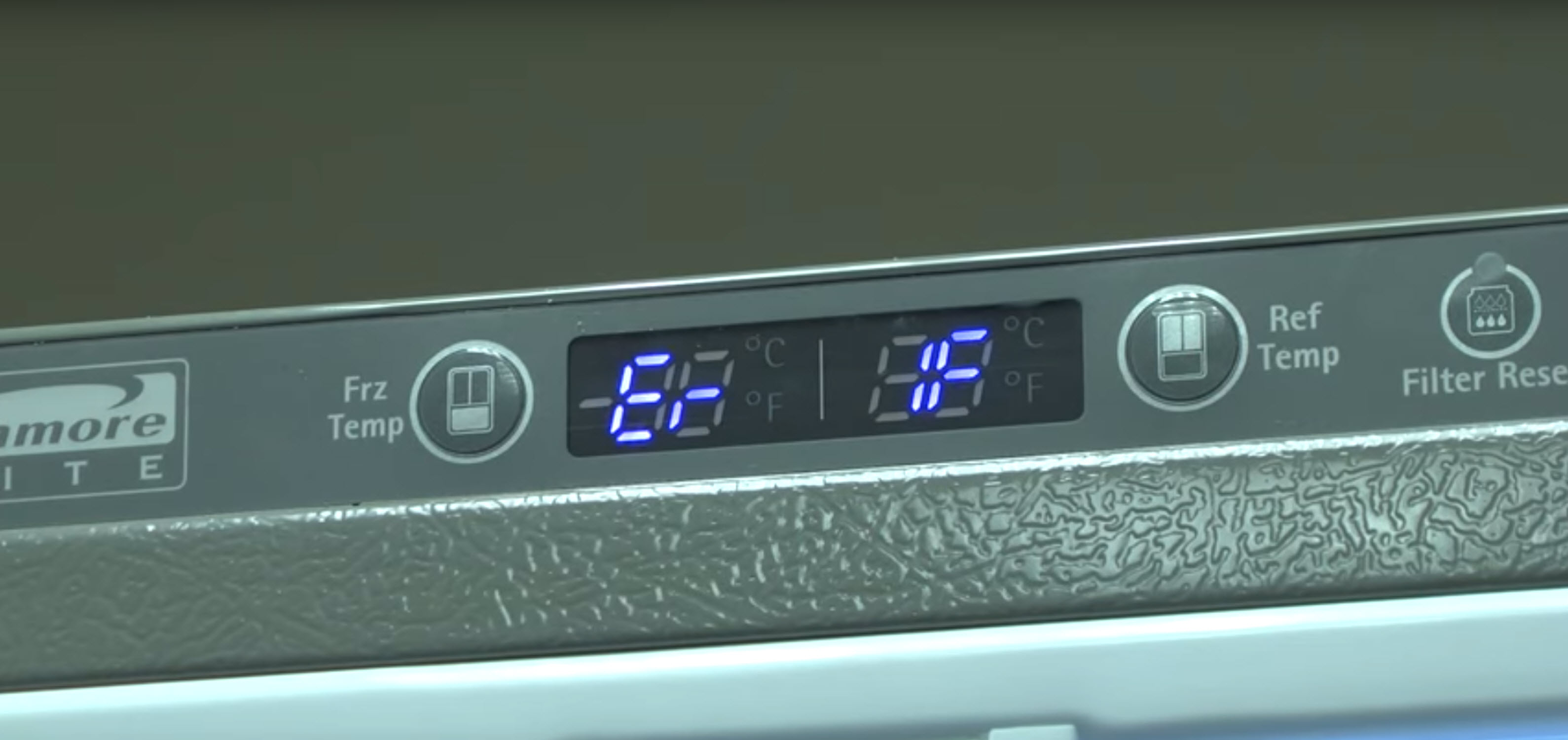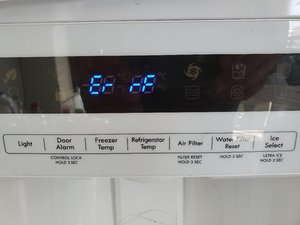Is your Kenmore refrigerator flashing an error code that’s got you puzzled? You’re not alone.
Many Kenmore users encounter these cryptic messages, and understanding what they mean can feel like deciphering a secret code. But don’t worry, you’re about to unlock the mystery behind these error codes and discover how to fix them without breaking a sweat.
Imagine the relief of knowing exactly what’s wrong with your appliance and the satisfaction of resolving the issue yourself. Stay with us, and you’ll gain the knowledge to tackle these error codes head-on, ensuring your fridge runs smoothly and efficiently. Dive in, and let’s turn those confusing codes into crystal-clear answers.
Common Kenmore Error Codes
Kenmore refrigerator error codes help identify issues with your appliance. From defrost problems to temperature faults, these codes provide guidance. Regular maintenance can prevent many issues.
When your Kenmore refrigerator starts acting up, understanding error codes can be your lifesaver. These codes serve as a direct communication from your appliance, signaling what might be wrong and where to look for solutions. Familiarizing yourself with these codes can save you time and potentially money on repairs. After all, who doesn’t appreciate a little self-reliance when faced with a household glitch?Common Error Code: E1
The E1 error code often indicates a problem with the freezer sensor. It’s a signal that the sensor might not be accurately reading the freezer’s temperature. You can check if the sensor is connected properly or needs replacing. This simple check might resolve the problem without needing expert assistance.Common Error Code: E2
An E2 code typically points to an issue with the refrigerator sensor. This can affect the overall cooling efficiency. Make sure the sensor is clean and properly connected. Have you ever found a forgotten item in your fridge that was spoiling? That’s a sign your cooling system might need attention.Common Error Code: F1
If you see an F1 code flashing, it’s time to inspect the ice maker system. This error usually means that the ice maker is malfunctioning. Check if the water supply to the ice maker is uninterrupted. Ensuring a steady flow can prevent this error from appearing.Common Error Code: F2
The F2 error is a heads-up that the defrost system might be compromised. A faulty defrost system can lead to ice build-up, reducing the fridge’s efficiency. Have you noticed more frost than usual? This error code is your cue to check the defrost heater and timer.Common Error Code: D1
The D1 error code signifies an issue with the compressor. The compressor is vital for cooling; if it’s not functioning well, your entire fridge suffers. Listen for unusual noises or vibrations from your fridge. These could be signs that the compressor needs attention. Understanding these common error codes empowers you to tackle minor issues before they escalate. Have you ever solved a problem by simply understanding a few technical signals? It’s a rewarding experience, and with these insights, your Kenmore refrigerator may soon be back to optimal performance.Identifying Error Code Causes
Kenmore refrigerators are reliable. Yet, error codes might pop up. Understanding these codes is crucial for troubleshooting. Each code signifies a specific issue. Identifying the root cause helps in efficient repair. Let’s explore common causes behind these error codes.
Power Supply Issues
Check the power cord and plug. Ensure they connect firmly. A loose connection can trigger an error code. Inspect the outlet for power. Use another appliance to test it. A faulty outlet might need an electrician.
Temperature Control Problems
Error codes can signal temperature issues. Set the fridge to the right temperature. Avoid overloading the fridge. Overloading blocks air vents. This affects cooling efficiency and triggers codes.
Sensor Malfunctions
Sensors monitor the refrigerator’s functions. A faulty sensor sends incorrect signals. This can lead to error codes. Inspect for any visible damage. Replacing a malfunctioning sensor might resolve the issue.
Blocked Air Vents
Blocked vents restrict airflow. This affects the fridge’s performance. Ensure vents are clear of obstructions. Rearrange items for better air circulation. This prevents unnecessary error codes.
Defective Door Seals
Door seals must be intact. A worn-out seal lets cold air escape. This makes the fridge work harder. It could trigger error codes. Inspect the seal for cracks or gaps. Replace if necessary.
Basic Troubleshooting Steps
Experiencing an error code on your Kenmore refrigerator can be frustrating. Understanding basic troubleshooting steps helps in resolving common issues quickly. Let’s explore some essential checks you can perform to restore your fridge’s functionality.
Check Power Supply
Start by checking if the refrigerator is plugged in correctly. Ensure the power cord is firmly connected to the outlet. Inspect the circuit breaker for tripped switches. A simple reset might be all it takes to restore power.
Inspect Door Seals
Damaged door seals can lead to error codes. Examine the rubber seals for any tears or dirt buildup. Clean the seals with mild soap and water. Replace them if you notice cracks or warping.
Examine Temperature Settings
Incorrect temperature settings may trigger error codes. Verify the settings on the control panel. Adjust the temperature to recommended levels. Ensure the fridge and freezer compartments are not overcrowded.

Credit: www.searspartsdirect.com
Specific Error Code Solutions
Encountering error codes on your Kenmore refrigerator can be frustrating. Each code signals a specific issue. Understanding these codes helps in quick fixes and maintenance. Below, we explore solutions for common Kenmore refrigerator error codes. This guide will help you troubleshoot effectively, ensuring your appliance runs smoothly.
Error Code 1: Temperature Issues
Temperature issues often arise from faulty thermostats. Check the thermostat settings first. Ensure the refrigerator is not overloaded with items. Overloading can block air vents. Clean dust off the condenser coils. Dust affects cooling efficiency. If problems persist, inspect the door seals. Worn seals can cause temperature fluctuations.
Error Code 2: Defrost Problems
Defrost problems can lead to ice buildup. This affects cooling performance. First, check the defrost heater. A faulty heater may need replacement. Examine the defrost thermostat for defects. It should close contacts when cold. Test the defrost timer. Ensure it’s advancing correctly. These checks help restore normal defrost functions.
Error Code 3: Sensor Malfunctions
Sensor malfunctions often result in inaccurate readings. Inspect the temperature sensor for damage. Replace it if necessary. Ensure the sensor is properly connected. Loose connections can disrupt function. Use a multimeter to test sensor resistance. Correct readings indicate a working sensor. Accurate sensors maintain optimal cooling conditions.
Error Code 4: Water Dispenser Faults
Water dispenser faults can stem from clogged filters. Replace the water filter regularly. Check the water inlet valve for blockages. Blocked valves restrict water flow. Inspect dispenser switches for electrical faults. Use a multimeter for testing. Ensure proper wiring connections. These actions can restore water flow efficiently.
When To Call A Professional
Encountering an error code on your Kenmore refrigerator can be frustrating. Sometimes, the solution is simple. Yet, some issues require expert help. Knowing when to call a professional is crucial. This ensures your appliance runs smoothly and efficiently.
Understanding The Complexity Of The Error
Some error codes indicate complex problems. These might involve electrical or mechanical issues. If you’re unsure about the error code, seek professional advice. A technician can diagnose and fix the problem accurately.
Repeated Error Codes
Does the same error code keep appearing? This signals a deeper issue. Temporary fixes might not solve the root problem. A professional can provide a lasting solution. Avoid repeated errors and potential damage.
Unusual Noises Or Leaks
Is your refrigerator making strange noises? Or is there a leak? These signs often accompany error codes. They can indicate malfunctioning parts. Call a professional to prevent further damage.
Lack Of Cooling
Is your refrigerator not cooling properly? This is a major concern. When paired with an error code, it needs urgent attention. A professional can restore your appliance’s cooling efficiency. Ensuring your food stays fresh.
Safety Concerns
Some issues can pose safety risks. Electrical problems or leaks are hazardous. If the error code suggests such risks, do not delay. A professional ensures safety and prevents accidents.
Warranty And Cost Considerations
Is your refrigerator under warranty? Attempting DIY repairs might void it. A professional ensures your warranty remains intact. It can also be cost-effective in the long run. Avoid expensive replacements and ensure efficient repairs.

Credit: www.ifixit.com
Preventive Maintenance Tips
Kenmore refrigerator error codes can hint at potential issues, helping prevent major breakdowns. Regularly check seals and clean coils for optimal performance. Address error codes promptly to avoid costly repairs and ensure efficient cooling.
Keeping your Kenmore refrigerator running smoothly can save you from the hassle of unexpected error codes. Regular maintenance is key to ensuring your appliance stays efficient and prolongs its lifespan. By following a few simple tips, you can prevent issues before they arise and maintain the optimal performance of your refrigerator.Regular Cleaning
Cleaning your refrigerator might seem like a chore, but it’s crucial for its health. Dust and debris can accumulate on the condenser coils, leading to overheating and potential error codes. Make it a habit to clean these coils every six months with a vacuum or a soft brush. Don’t forget the interior! Remove expired items and wipe down shelves and drawers with a mild detergent. A clean refrigerator not only operates better but also keeps your food fresh longer.Monitor Temperature
Keeping an eye on your refrigerator’s temperature is more important than you might think. Setting it too low or too high can lead to inefficient cooling and increased energy consumption. Your Kenmore fridge should ideally be set to 37-40°F (3-4°C) for optimal performance. Use a thermometer to check the temperature periodically. If you notice fluctuations, it might be time to adjust the settings or check for underlying issues.Routine Seal Inspection
The door seals, or gaskets, play a vital role in maintaining the refrigerator’s cooling efficiency. Over time, these seals can wear out, allowing cold air to escape and causing the fridge to work harder. This can lead to error codes and higher energy bills. Inspect the seals regularly for cracks or gaps. A simple test is to close the door on a piece of paper; if you can pull it out easily, the seal may need replacing. A well-maintained seal keeps your appliance running smoothly and your food at the right temperature. How often do you check your refrigerator’s seals? It might be time to add this simple task to your routine. Taking these preventive steps can save you from dealing with unexpected issues and ensure your Kenmore refrigerator operates efficiently for years to come.
Credit: www.youtube.com
Frequently Asked Questions
What Does Kenmore Refrigerator Error Code Mean?
It signals a problem. Check the user manual for specific details about the error.
How Do I Reset Kenmore Refrigerator Error Codes?
Unplug the refrigerator. Wait a few minutes. Plug it back in to reset.
Why Is My Kenmore Fridge Showing Error Codes?
Error codes appear due to technical issues. Check the manual or contact customer service for help.
Can I Fix Kenmore Error Codes Myself?
Some errors are simple to fix. Consult your manual for guidance on minor problems.
Do Kenmore Refrigerators Have Common Error Codes?
Yes, some error codes are common. They often indicate minor issues easily resolved.
Conclusion
Understanding Kenmore refrigerator error codes helps avoid food spoilage. These codes signal issues needing attention. Addressing them promptly ensures the appliance runs smoothly. Regular maintenance prevents frequent errors, saving time and money. Check the manual or consult a professional for guidance.
Keep the refrigerator clean and well-organized. Proper care extends its lifespan. You’ll enjoy peace of mind knowing your food stays fresh. Stay informed and proactive for the best results. A well-functioning refrigerator is a key part of a happy kitchen.
